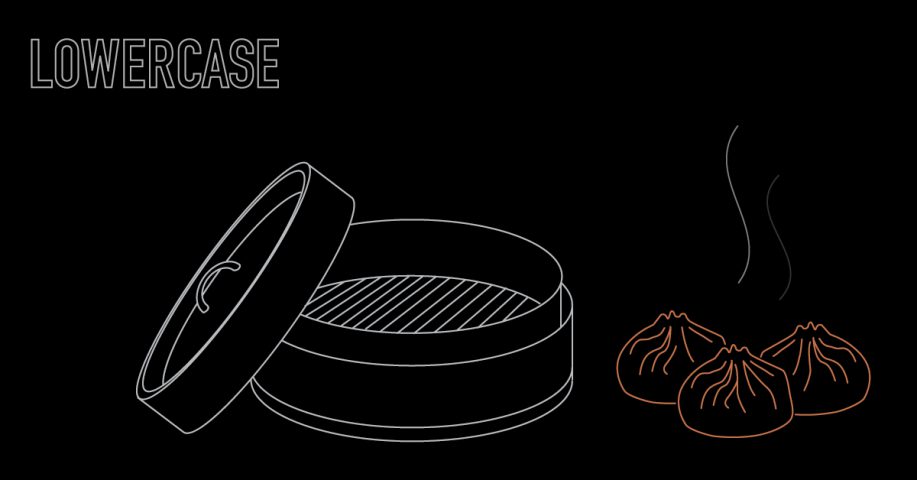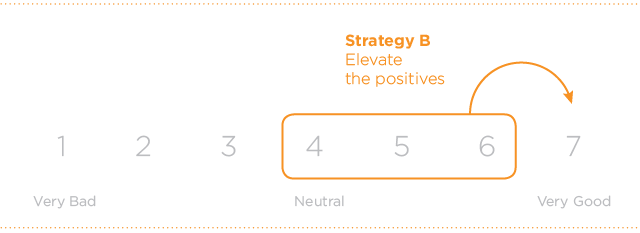Getting to Wow


Imagine two options—your company could eliminate negative experiences for unhappy customers OR elevate positive experiences for happy customers. Which do you choose?
Surprisingly, most leaders overlook the strategy that yields nine times more revenue.
In the test kitchen of Lettuce Entertain You on Chicago’s north side, a group of leaders—chefs, managers and entrepreneurs—sample a series of potential new dishes for an existing Asian restaurant. “No”, “maybe” and a few “yes” replies trail each tasting. The highlight for Rich Melman, chairman of the company, is a Hong Kong style bao.
Alone among these experienced restaurateurs, Rich felt the bao was so special and memorable that the dish didn’t just deserve to be added to an existing menu, but instead should be the focus of an entirely new restaurant.
Lettuce partnered with Lowercase to design a unique brand identity, build a brand system to extend memorable and consistent experiences across touchpoints, craft a blend of sensorial details within the physical space, extensively test prototypes to improve service processes, and design irreverent retail packaging that brought the bao to grocery stores with the phrase “Take me. Heat me. Eat me.”
Wow Bao became an instant success for Lettuce, adding to a portfolio that includes over 60 unique concepts and 100 restaurants. How does a company consistently build such rapid success?
By embracing Strategy “B”.
Two Options – Which Would You Choose?
According to Chip Heath and Dan Heath in The Power of Moments, customer experience researchers at Forrester (a leading research and advisory firm), surveyed 120,000 customers about their most recent experience with companies across sixteen industries.
Customers were asked to rate how they felt about their experience on a scale ranging from 1 to 7, where 1 is “very bad”, 4 is “neutral” and 7 is “very good”.

Customer ratings spanned the full scale, leaving companies to consider where best to invest. The authors asked dozens of executives from leading companies which of the following strategies describes how their company allocates resources:
Strategy “A” eliminates the negatives by raising unhappy customers (rating 1, 2 or 3) to a neutral level 4.
Strategy “B” elevates the positives by boosting neutral and positive customers (rating 4, 5 or 6) to a very good 7.

Executives estimated spending about 80% of resources on Strategy “A”, fixing problems for unhappy customers.
Yet, by far, the more valuable investment is Strategy “B”. In fact, as a strategic investment, the choice between Strategy “A” and “B” is not even close.
Executives Miscalculate the Value of (Un)Happiness
Investing in Strategy “B” generates nine times more revenue than Strategy “A”.
Using survey results, Forrester built models of the financial value of a customer at each rating level by quantifying the amount they would spend on products or services over the next year.
They found that the happiest (rating 7) customers often spend 2-3 times more than neutral customers and that the number of positive customers is significantly larger than the number of negative customers. Strategy “B” generates nine times more revenue because it creates more value per person and reaches far more people.
So, how do we elevate happy customers to level 7?
When Good Becomes “Very Good”
Contrary to popular belief, customers who feel “very good” about their experiences are not necessarily those who are entertained nor those who only have positive experiences.
“Very good” rankings do NOT require you to deliver the best experience someone has had across companies nor create a significant “life moment”. More often, customers highly rate an experience based on expectations for this type of moment.
“High Points”
The first step to gain top ratings and increase revenue? Start thinking in moments and looking for opportunities to design “high points” — interactions that elevate your brand, product or service in the eye of your customer — on purpose.
High points may bring about magical results, but they are not magic. They’re simply moments that have been designed and built – often within everyday brand interactions – to connect with customers based on how they measure, value and remember experiences.
High points require creativity – they won’t emerge naturally – yet they become easier to create once you know where to look and how to start.
Does This Apply to Your Company?
Some leaders imagine that high points are the domain of entertainment and consumer-focused companies. Don’t make this mistake.
Whether your “customers” are donors, vendors, clients, members, suppliers, patients, volunteers, employees, recruits, visitors, guests, subscribers, ticket holders, partners or investors, they all have expectations.
This means that you have access to a valuable opportunity to earn more: invest in Strategy “B” and travel the direct path to “Wow”.
— STACY CHYLA BRUCE, Business Design Director
When customers rate an experience, they don’t add or average each moment—their rating is based solely on 2 key moments. Read “Moments That Matter” to learn more.